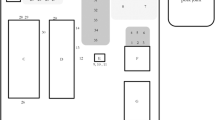Abstract
Despite North Carolina’s long history with feral swine, populations were low or absent in eastern counties until the 1990s. Feral swine populations have since grown in these counties which also contain a high density of commercial production swine (CPS) facilities. Sixteen of the highest swine producing U.S. counties also populated with feral swine are in North Carolina. Disconcertingly, since 2009, positive tests for exposure to swine brucellosis or pseudorabies virus have been found for feral swine. We surveyed 120 CSP facilities across four eastern counties to document the level and perception of feral swine activity around CSP facilities and to identify disease transmission potential to commercial stock. Nearly all facility operators (97%) recognized feral swine were in their counties. Far fewer said they had feral swine activity nearby (18%). Our inspections found higher presence than perceived with feral swine sign at 19% of facilities where operators said they had never observed feral swine or their sign. Nearly 90% expressed concern about feral to domestic disease transmission, yet only two facilities had grain bins or feeders fenced against wildlife access. Due to increasing feral swine populations, recent evidence of disease in feral populations, the importance of swine production to North Carolina’s economy and the national pork industry, and potential for feral-domestic contact, we believe feral swine pose an increasing disease transmission threat warranting a stringent look at biosecurity and feral swine management at North Carolina CPS facilities.

Similar content being viewed by others
References
Brickel J. (1737) The Natural History of North Carolina. Dublin: James Carson.
Brockington L, Hurley SL. (2006) Plantation Between the Waters: A Brief History of Hobcaw Barony. Charleston, SC: The History Press.
Corn JL, Cumbee JC, Chandler BA, Stallknecht DE, Fischer JR. (2005) Implications of feral swine expansion: Expansion of feral swine in the United States and potential implications for domestic swine. Proceedings of the United States Animal Health Association 109:295-297.
Corn JL, Cumbee JC, Barfoot R, Erickson GA. (2009) Pathogen exposure in feral swine populations geographically associated with high densities of transitional swine premises and commercial swine production. Journal of Wildlife Diseases 43: 713-721.
Engeman RM, Stevens A, Allen J, Dunlap J, Daniel M, Teague D, Constantin BU. (2007) Feral swine management for conservation of an imperiled wetland habitat: Florida’s vanishing seepage slopes. Biological Conservation. 134: 440-446.
Feral Swine Subcommittee on Brucellosis and Pseudorabies. (2005) Feral Swine Subcommittee On Brucellosis and Pseudorabies Report. St. Joseph, MO: United States Animal Health Association.
Frost CC. (1993) Four centuries of changing landscape patterns in the longleaf pine ecosystem. Tall Timbers Fire Ecology Conference 18:17-44.
Gloster J, Donaldson AI, Hough MN. (1984) Analysis of a series of outbreaks of Aujeszky’s disease in Yorkshire in 1981-82: the possibility of airborne disease spread. Vet Rec,. 114(10): 234-9.
Hahn EC, Page GR, Hahn PS, Gillis KD, Romero C, Annelli JA, Gibbs EP. (1997) Mechanisms of transmission of Aujeszky’s disease virus originating from feral swine in the USA. Vet. Microbiol. 55:123-130.
Kristensen CS, Botner A, Takai H, Nielsen JP, Jorsal SE. (2004) Experimental airborne transmission of PRRS virus. Veterinary Microbiology 99: 197–202.
National Pork Producers Council [NPPC] (2009) NPPC economic testimony. Testimony before the U.S. House Committee on Agriculture Subcommittee on Livestock Dairy and Poultry, Oct 22, 2009, Washington, DC
Schoenbaum, MA, Freund JD, Beran GW. (1991) Survival of pseudorabies virus in the presence of selected diluents and fomites. J Am Vet Med Assoc. 198(8): 1393-1397.
United States Animal Health Association [USAHA] (2004) All 50 states now free of pseudorabies in swine, http://www.usaha.org/news/pr/2004/p04pseud.txt. Accessed 22 September 2010
United States Department of Agriculture/Animal Plant Health Inspection Service [USDA/APHIS] (2007a) Pseudorabies state status map, www.aphis.usda.gov/animal_health/animal_dis_spec/swine/images/pseu_st_status_map.jpg. Accessed 28 December 2010
United States Department of Agriculture/Animal Plant Health Inspection Service [USDA/APHIS] (2007b) Brucellosis state status map, www.aphis.usda.gov/animal_health/animal_dis_spec/swine/images/br_status_map.jpg. Accessed 28 December 2010
Wood GW, Barrett RH (1979) Status of wild pigs in the United States. Wildlife Society Bulletin 7:237-246.
Author information
Authors and Affiliations
Corresponding author
Rights and permissions
About this article
Cite this article
Engeman, R., Betsill, C. & Ray, T. Making Contact: Rooting Out the Potential for Exposure of Commercial Production Swine Facilities to Feral Swine in North Carolina. EcoHealth 8, 76–81 (2011). https://doi.org/10.1007/s10393-011-0688-8
Received:
Revised:
Accepted:
Published:
Issue Date:
DOI: https://doi.org/10.1007/s10393-011-0688-8




